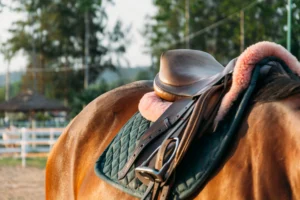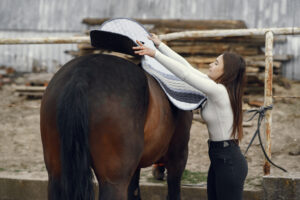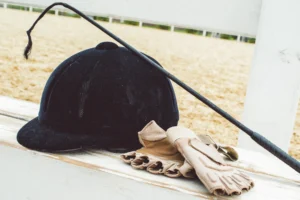Introduction
The majestic horse—a symbol of strength, freedom, and nobility—has served alongside humans for thousands of years. From transportation to warfare, agricultural work to sport and recreation, horses have been our loyal companions throughout history. Yet despite this long partnership, horse abuse continues to plague these magnificent animals across the United States.
When we think about animal cruelty, our minds often turn to domestic pets like dogs and cats. However, horse abuse represents one of the most overlooked forms of animal mistreatment in America today. These intelligent, sensitive creatures suffer in silence, often hidden away on private properties or disguised as “traditional practices” in various equestrian industries.
The reality of horse abuse in America is both shocking and heartbreaking. From the racing industry to tourist attractions, work environments to private ownership, horses continue to endure unnecessary suffering at human hands. According to the American Society for the Prevention of Cruelty to Animals (ASPCA), thousands of cases of horse abuse are reported annually, with countless more going undocumented.
In this comprehensive examination, we’ll expose four particularly disturbing forms of horse abuse that persist across the United States today. We’ll also explore how to identify signs of mistreatment, what actions concerned citizens can take, and highlight the dedicated animal welfare organizations working tirelessly to protect these noble animals.
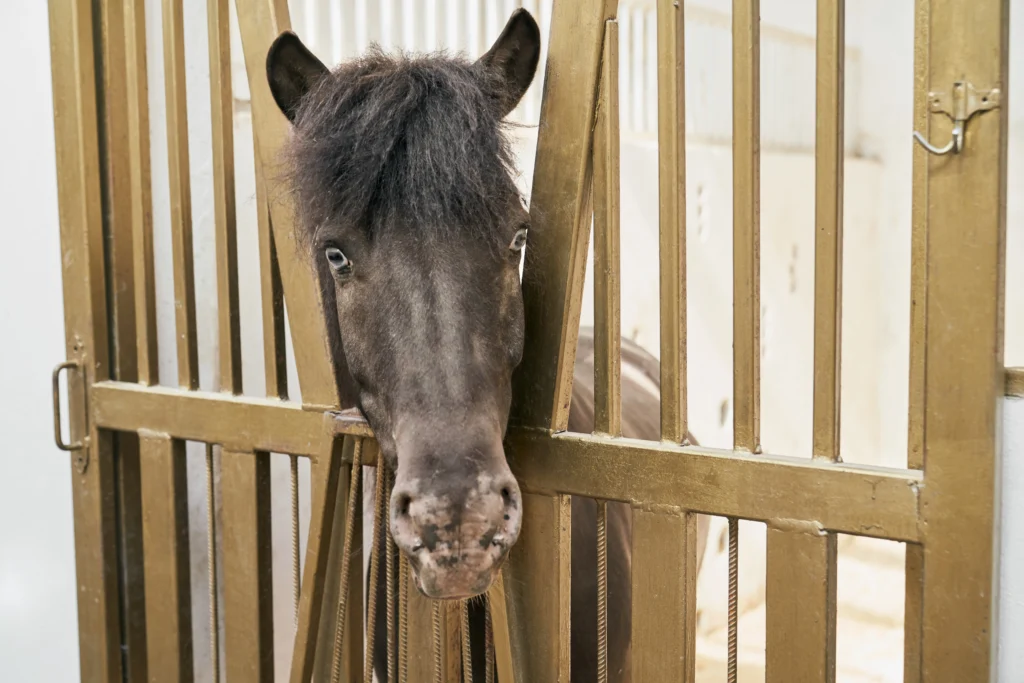
The Disturbing Reality of Horse Abuse in America
Before diving into specific practices, it’s important to understand the scope of horse abuse in the United States. Approximately 9.2 million horses live in America, used for everything from companionship to competition. Unfortunately, not all receive proper care and treatment.
The American Veterinary Medical Association reports that horse abuse cases have increased by nearly 60% over the past decade. Economic downturns, lack of education about proper equine care, and the high costs of maintaining horses all contribute to this troubling trend. The average cost of basic horse care exceeds $2,000 annually—excluding veterinary emergencies—making horses particularly vulnerable to neglect when owners face financial difficulties.
Horse abuse takes many forms, from active cruelty to passive neglect. What makes addressing this issue particularly challenging is that horses, unlike many domestic pets, are often kept in remote locations without regular public oversight. Additionally, some industries have normalized certain abusive practices as “tradition,” making reform difficult despite clear evidence of animal suffering.
Practice #1: Soring – A Cruel Tradition in the Tennessee Walking Horse Industry
One of the most egregious forms of horse abuse still practiced today is “soring”—the intentional infliction of pain to a horse’s legs or hooves to force an exaggerated gait known as the “Big Lick.” This practice mainly occurs in the Tennessee Walking Horse show industry.
Soring typically involves applying caustic chemicals like mustard oil, diesel fuel, or kerosene to a horse’s lower legs. These chemicals burn the skin, causing intense pain. To amplify this suffering, trainers often wrap the treated areas in plastic to intensify the burning sensation. When these horses step down, they experience extreme pain, causing them to lift their front legs higher and faster—producing the prized exaggerated gait that wins competitions.
Other soring methods include:
- Pressure shoeing: trimming a horse’s hoof to the sensitive live tissue and adding pressure from foreign objects placed between the hoof and shoe
- Inserting sharp objects into the sensitive parts of hooves
- Using heavy chains that strike the chemically-treated legs, intensifying pain
- Applying painful “action devices” to enhance movement
Despite being officially outlawed by the Horse Protection Act of 1970, soring continues today. The USDA’s Animal and Plant Health Inspection Service estimates that approximately 90% of Tennessee Walking Horses in certain competitions show signs of soring. This represents one of the most deliberate forms of horse abuse in the country.
Lisa Ross, director of equine protection at the Humane Society of the United States, states: “Soring is one of the most horrific forms of horse abuse I’ve witnessed in my 25-year career. These animals suffer daily torture simply for a ribbon and trophy.”
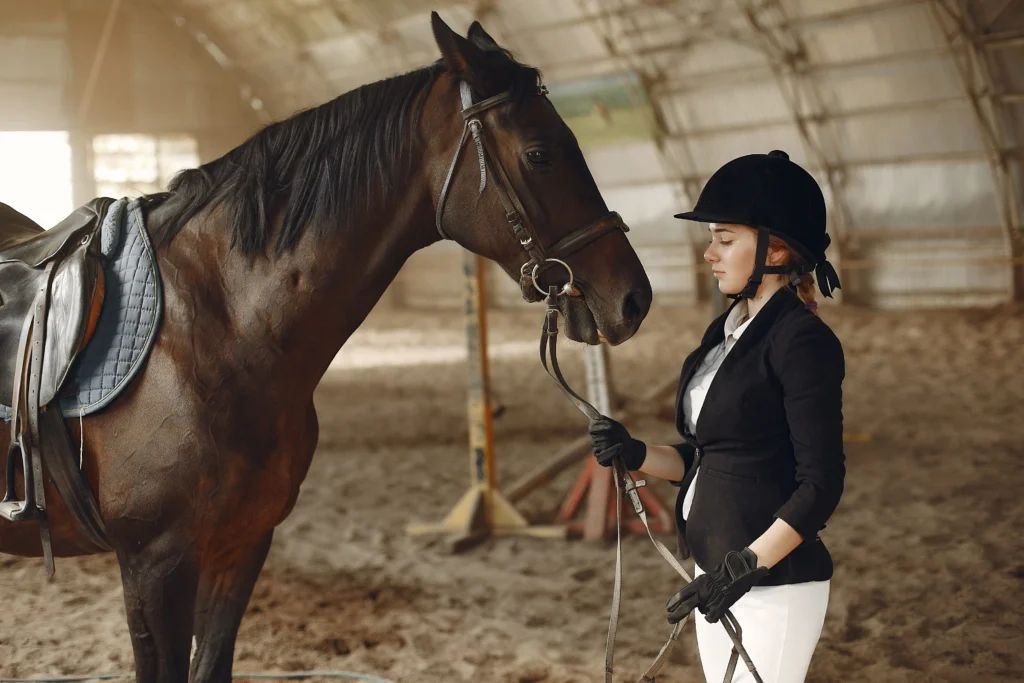
Practice #2: Premarin Farms and the Exploitation of Pregnant Mares
Another disturbing form of horse abuse occurs on Premarin farms, where pregnant mares are confined to produce estrogen-rich urine used in hormone replacement therapy medications.
On these farms, pregnant mares are kept in tiny stalls called “pee lines” for six months at a time. These stalls measure roughly 8 feet by 3.5 feet—so small the horses cannot turn around or lie down comfortably. The mares are fitted with urine collection devices and deliberately kept dehydrated to concentrate their urine.
This extreme confinement prevents natural behaviors like socialization, movement, and proper rest—all essential to equine welfare. The American Association of Equine Practitioners considers this practice a serious form of horse abuse, noting that horses are herd animals requiring regular exercise and social interaction for basic psychological health.
The foals born to these mares face an equally grim fate. Most male foals and many females are sent directly to slaughter as “byproducts” of this industry. While precise numbers are difficult to obtain, animal welfare organizations estimate thousands of foals meet this end annually.
Dr. Nicholas Carter, equine veterinarian and animal welfare advocate, explains: “The conditions on Premarin farms represent systematic horse abuse. These mares develop serious physical and psychological problems, including muscle atrophy, hoof issues, and stereotypic behaviors indicative of severe stress.”
Practice #3: Horse Slaughter and the Export Pipeline
While horse slaughter facilities were effectively shut down in the United States through funding restrictions in 2007, approximately 20,000-30,000 American horses are still shipped to Mexico and Canada annually for slaughter—a brutal pipeline of horse abuse that continues today.
The journey itself constitutes severe horse abuse. Horses are often transported in double-deck trailers designed for shorter cattle—not tall horses. This forces them to travel for up to 24 hours in awkward, painful positions without food, water, or rest. Many arrive injured, dehydrated, or dead.
The actual slaughter process represents perhaps the ultimate form of horse abuse. Unlike livestock raised specifically for meat, horses aren’t bred or designed for slaughter facilities. Their long necks make proper stunning difficult, often resulting in horses remaining conscious during dismemberment. Undercover investigations by animal rights organizations have documented horses being stabbed repeatedly in the neck before processing—a horrifying end for animals that served humans faithfully.
What makes this practice particularly troubling is that many slaughtered horses were once beloved pets or working animals. Approximately 90% of horses sent to slaughter were previously in good condition and could have been rehomed. They enter the slaughter pipeline through livestock auctions where “kill buyers” purchase them by the pound.
“Many Americans are unaware their former family horse might end up in the slaughter pipeline,” says Jennifer Mitchell, founder of Blue Ridge Equine Rescue. “This represents a devastating betrayal and the most final form of horse abuse these animals can experience.”
Practice #4: Carriage Horses in Urban Environments
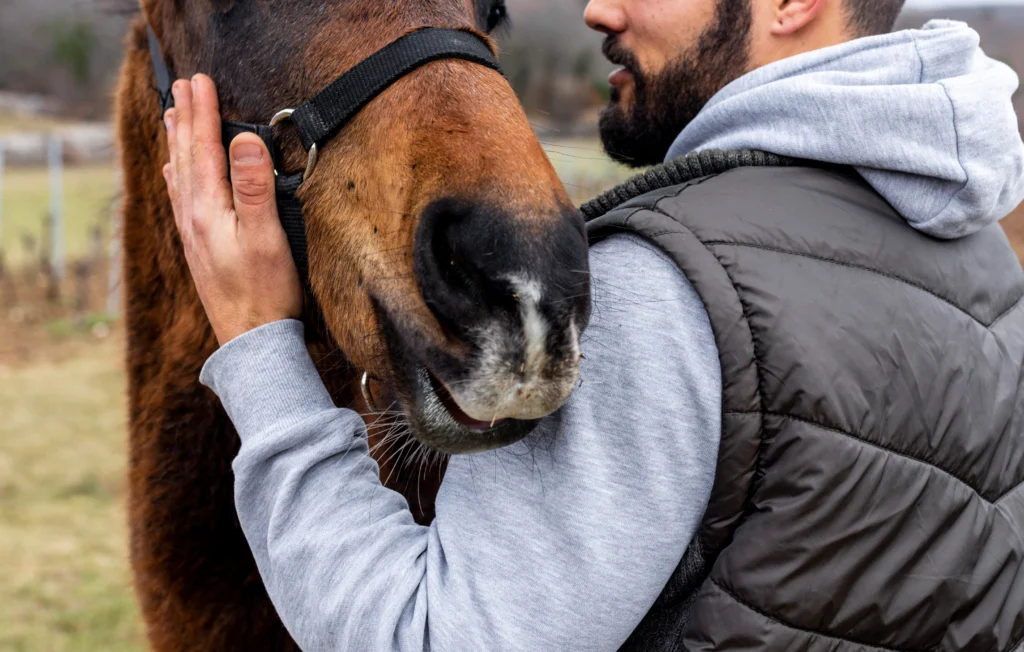
One form of horse abuse happening in plain sight involves carriage horses in major American cities. In metropolitan areas like New York, Chicago, Philadelphia, and Charleston, horses pull heavy carriages through congested streets for up to nine hours daily regardless of weather conditions.
Urban carriage horses face numerous hardships constituting horse abuse:
- Working in extreme temperatures (often over 90°F in summer or below freezing in winter)
- Breathing exhaust fumes continuously
- Walking on hard pavement that damages joints and hooves
- Startling traffic conditions leading to accidents and injuries
- Inadequate access to water and rest periods
- Small stall confinement when not working
In New York City alone, over 100 carriage horse incidents have been documented in the past decade, including collisions, collapses, and deaths. Perhaps most memorably, in 2022, a carriage horse named Ryder collapsed from heat exhaustion and dehydration on a Manhattan street, unable to rise for over an hour while still in harness.
“Forcing horses to pull carriages through busy urban streets in all weather extremes represents institutionalized horse abuse,” explains Catherine Wilson, equine welfare specialist. “These animals evolved to roam grasslands, not navigate concrete jungles while pulling heavy loads amid honking horns and exhaust fumes.”
Recognizing Signs of Horse Abuse and Neglect
Learning to recognize signs of horse abuse is crucial for intervention. Here are key indicators that a horse may be suffering from mistreatment:
Physical Signs of Horse Abuse:
- Emaciation with visible ribs, spine, and hip bones
- Untreated wounds, sores, or lameness
- Overgrown or neglected hooves (should be trimmed every 6-8 weeks)
- Dull, matted coat or excessive shedding
- Heavy parasite infestation (visible worms or extreme itching)
- Pressure sores from ill-fitting equipment
- Chemical burns or scars on lower limbs (potential signs of soring)
- Untreated medical conditions (eye issues, respiratory problems, etc.)
Environmental Signs of Horse Abuse:
- Inadequate shelter from elements
- Insufficient food or water
- Dangerous fencing or structures that could cause injury
- Excessive manure accumulation (proper mucking should occur regularly)
- Standing in mud or filth constantly
- Isolation from other horses (horses are social animals requiring companionship)
- Inadequate space for movement and exercise
Behavioral Signs of Horse Abuse:
- Extreme fear responses to normal handling
- Signs of learned helplessness (failing to react to painful stimuli)
- Stereotypic behaviors like cribbing, weaving, or stall walking (indicates psychological distress)
- Aggression stemming from pain or fear
- Apathy or depression (hanging head, minimal reaction to environment)
If you observe these signs, the horse may be experiencing horse abuse requiring intervention.
How to Report Horse-Abuse
Witnessing horse abuse can be distressing, but taking appropriate action may save an animal’s life. Here’s how to report suspected equine mistreatment:
- Document the situation: Take photos or videos if possible, noting date, time, and specific signs of horse abuse you observed.
- Contact local authorities: Report horse abuse to your local animal control, humane society, or law enforcement agency. In rural areas, contact your county sheriff’s department.
- Call animal abuse hotlines: The Animal Legal Defense Fund (1-800-952-LAWS) can direct you to appropriate authorities for reporting horse abuse.
- Reach out to equine rescue organizations: Local horse rescues often have relationships with law enforcement and can advise on horse abuse cases.
- Be persistent: Follow up on your report if conditions don’t improve. Horse abuse cases sometimes require multiple reports before action is taken.
When reporting, remain factual and specific about the horse abuse you witnessed. Note that in many jurisdictions, animal control officers need a warrant to enter private property unless the animal is in imminent danger.
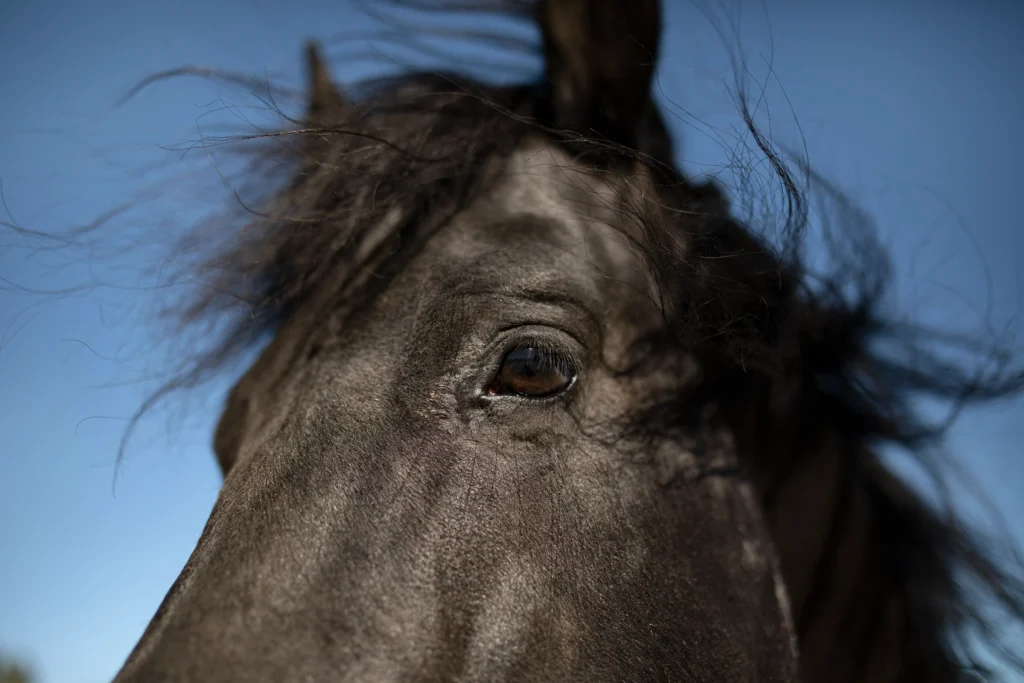
Organizations Fighting Against Horse Abuse
Numerous dedicated organizations work tirelessly to combat horse abuse across America:
The Humane Society of the United States – Equine Protection Program
The HSUS investigates horse abuse cases nationwide, advocates for stronger legislation, and supports rescues. Their work exposing soring practices has been instrumental in pushing for reform in the Tennessee Walking Horse industry.
Learn more about their equine protection work
American Society for the Prevention of Cruelty to Animals (ASPCA)
The ASPCA conducts large-scale rescues of horses from horse abuse situations and advocates for policy changes to protect equines. Their equine welfare program provides training for law enforcement on recognizing and addressing horse abuse.
Explore the ASPCA’s equine initiatives
Days End Farm Horse Rescue
This Maryland-based organization has rescued over 2,400 horses from horse abuse and neglect since 1989. They provide rehabilitation, training, and adoption services while educating the public about proper equine care.
The American Wild Horse Campaign
Focusing specifically on protecting wild horses from horse abuse during government roundups and processing, this organization advocates for humane management practices and preservation of wild herds.
Horse Plus Humane Society
Operating across multiple states, this organization combats horse abuse through direct intervention, law enforcement training, and their innovative “Last Act of Kindness” program offering humane euthanasia alternatives to sending horses to slaughter.
How You Can Help End Horse Abuse
Beyond reporting suspected cases, there are many ways individuals can contribute to ending horse abuse in America:
Advocacy and Awareness
- Share information about horse abuse on social media and within your community
- Support legislation addressing horse abuse, such as the PAST Act (Prevent All Soring Tactics)
- Boycott industries and events that profit from horse abuse
- Educate others about humane alternatives to practices involving horse abuse
Direct Support
- Volunteer at equine rescue organizations working to rehabilitate victims of horse abuse
- Foster or adopt rescued horses when possible
- Donate to organizations fighting horse abuse through investigation, rescue, and policy work
- Offer professional skills (veterinary services, legal assistance, construction) to local rescues
Responsible Horse Ownership
- Research thoroughly before acquiring a horse to ensure you can provide proper care
- Create a financial plan addressing potential emergencies to prevent neglect
- Learn about proper equine management from reputable sources
- Have an end-of-life plan for your horse that does not include auction or potential slaughter
As PetsPump.com emphasizes in their guide to responsible pet ownership, proper planning prevents many animal welfare issues.
Legal Framework Surrounding Horse-Abuse
Understanding the legal protections against horse abuse helps in addressing these issues effectively:
Federal Laws
- The Horse Protection Act (1970): Prohibits soring practices in horse shows and exhibitions
- The Commercial Transportation of Equines for Slaughter Act: Regulates how horses bound for slaughter must be transported
- The SAFE Act (Safeguard American Food Exports): Proposed legislation that would ban horse slaughter in the US and the export of horses for slaughter abroad
State Laws
All 50 states have animal cruelty laws that include protections against horse abuse, though the specifics vary significantly. Some states have particularly strong equine protection laws:
- California: Prohibits the sale of horses for slaughter and the possession of horse meat for human consumption
- Illinois: Has specific provisions addressing horse abuse with enhanced penalties
- Kentucky: Despite being horse country, has some of the weakest horse abuse laws, ranking 43rd nationally for animal protection laws according to the Animal Legal Defense Fund
Local Ordinances
Many counties and municipalities have additional regulations regarding horse keeping, including:
- Minimum space requirements
- Shelter standards
- Noise and manure management regulations
- Limits on the number of horses permitted per acre
For specific information about horse-abuse laws in your area, consult resources from the Animal Legal Defense Fund.
The Economic Impact of Proper Horse Care vs. Horse Abuse
One factor contributing to horse abuse is the significant cost of proper equine care. Understanding these economics helps address root causes:
The average annual cost of basic horse maintenance runs $2,000-$4,000, including:
- Quality feed: $1,000-$2,400 annually
- Regular farrier care: $350-$1,200 annually
- Routine veterinary care: $300-$600 annually
- Deworming and vaccinations: $200-$300 annually
- Dental care: $100-$300 annually
These figures exclude boarding fees, which average $300-$700 monthly, and emergency veterinary care, which can quickly run into thousands of dollars.
To prevent horse abuse stemming from financial hardship, several resources exist:
- Temporary assistance programs: Organizations like Fleet of Angels provide emergency feed assistance
- Low-cost veterinary clinics: Many veterinary schools offer services at reduced rates
- Gelding vouchers: Programs to prevent unwanted breeding and subsequent horse abuse
- Euthanasia assistance: Humane end-of-life options for owners facing impossible medical bills
As noted in a PetsPump.com article on affordable pet care, planning for animal care costs prevents many welfare issues.
The Psychology Behind Horse Abuse
Understanding why horse abuse occurs helps in developing effective prevention strategies. Several psychological factors contribute:
Economic Factors
Financial strain represents the most common driver of neglect-based horse abuse. The average lifespan of a horse (25-30 years) means a long-term financial commitment many owners aren’t prepared for.
Traditional Practices
Some forms of horse abuse persist because they’re framed as “tradition” rather than cruelty. Breaking these cultural patterns requires education and alternative methods that achieve goals without causing suffering.
Ignorance
Surprisingly, many cases of horse abuse stem not from malice but from lack of knowledge. First-time horse owners may not recognize signs of pain, distress, or inadequate conditions.
Performance Pressure
In competitive environments, the desire to win can override concern for equine welfare, leading to practices that constitute horse abuse in the pursuit of ribbons, trophies, or prize money.
According to Dr. Temple Grandin, renowned animal behaviorist: “People don’t see the animal anymore; they just see the goal. That disconnect enables horse abuse in pursuit of performance objectives.”
Conclusion: Creating a Future Free from Horse Abuse
The fight against horse abuse requires a multifaceted approach involving education, advocacy, enforcement, and cultural change. While the four practices highlighted in this article represent some of the most egregious forms of mistreatment, countless horses suffer daily in less visible ways across America.
By learning to recognize signs of horse abuse, reporting suspected cases, supporting organizations fighting for equine welfare, and advocating for stronger legal protections, we can create meaningful change for these magnificent animals who have served humanity for millennia.
As responsible members of society, we must question practices that cause unnecessary suffering, even when disguised as tradition or necessity. The horses subjected to soring, Premarin production, slaughter pipelines, or urban carriage work deserve our voice and protection.
For more information on animal welfare topics, visit PetsPump.com, where you’ll find resources on responsible pet ownership, animal rescue, and wildlife conservation.
By working together, we can create a future where horse abuse exists only in history books, and these majestic animals receive the respect, care, and dignity they deserve.
Resources for Additional Information on Horse Abuse
- American Veterinary Medical Association: Equine Welfare Resources
- The Unwanted Horse Coalition: Resources for Horse Owners
- Equine Protection Network: Educational Materials
- The American Horse Council: Welfare Resources
- American Association of Equine Practitioners: Horse Owner Resources
By staying informed and taking action, we can all contribute to ending horse abuse in America.



